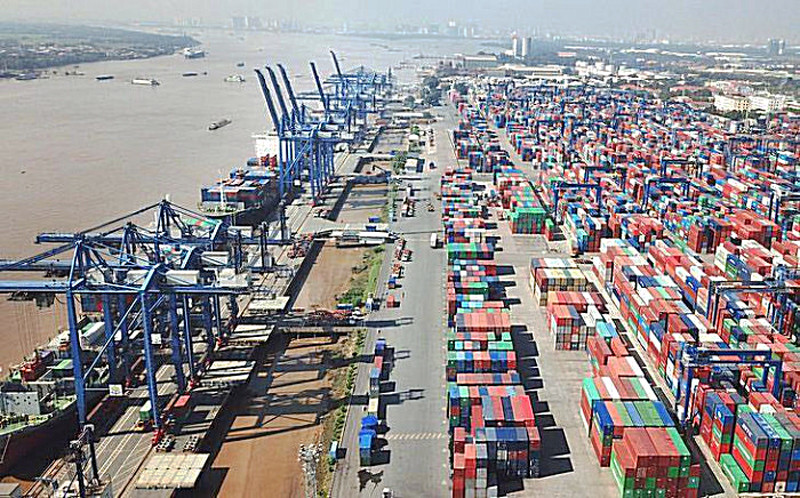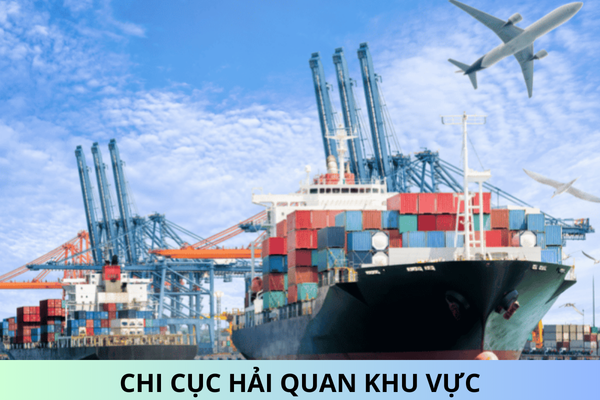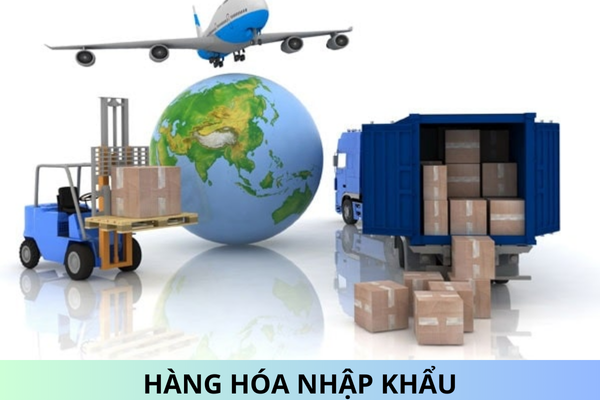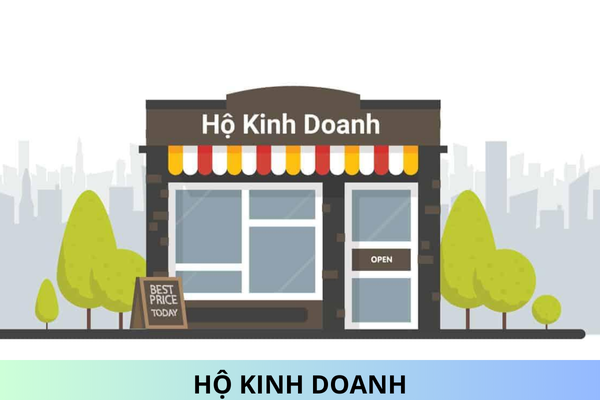What are regulations on monitoring the process that exported container goods or bulk goods that enter or leave a seaport checkpoint in Vietnam?
Hello Lawnet. I'm learning regulations on customs procedures, customs supervision and inspection, export tax, import tax, and tax administration applied to exports and imports. I have a question. What are regulations on monitoring the process that exported container goods or bulk goods that enter or leave a seaport checkpoint in Vietnam? Thank you!
Hong Khanh - Dong Nai

What are regulations on monitoring the process that exported container goods or bulk goods that enter or leave a seaport checkpoint in Vietnam? - image from internet
Pursuant to Clause 32 Article 1 of the Circular 39/2018/TT-BTC (amending the Circular 38/2015/TT-BTC) on customs procedures, customs supervision and inspection, export tax, import tax, and tax administration applied to exports and imports issued by the Minister of Finance, the regulations on monitoring the process that exported container goods or bulk goods that enter or leave a seaport checkpoint in Vietnam are stipulated as follows:
Monitor the process that exported container goods or bulk goods that enter or leave a seaport checkpoint
a) When bringing the goods into the seaport:
a.1) Responsibilities of customs declarant: Provide information about the customs declaration number and unique consignee reference number of the exported consignment for the warehousing service provider:
a.2) Responsibilities of a warehousing service provider:
a.2.1) Receive information about customs declaration number or unique consignee reference number of a consignment to be exported or entered the port by the declarant; receive information about a list of containers that are screened (if any) from the e-customs system;
a.2.2) Update information about goods entering the port or information about modifications or cancellation (if any) using the Forms No. 14 (container goods) or form No. 15 (bulk goods), and form No. 16 or No. 17 (if any) in Appendix X issued herewith, and then send them to the e-customs system.
a.3) Responsibilities of customs authority:
a.3.1) Receive information about goods entering the port and modification or cancellation (if any) from the e-customs system of the warehousing service provider and approve information about the cancellation of goods entering the port (if any).
a.3.2) Update information about a list of containers that are screened (if any) using Form No. 03 of Appendix X issued herewith to the e-customs system of the warehousing service provider.
b) While the goods are stored at the seaport:
b.1.) If the goods are not in their original condition (for sampling purpose or changes in packages): The customs declarant, the warehousing service provider and the customs authority shall comply with Point c Clause 1 Article 52 hereof;
b.2) If the containers are screened inside the port:
b.2.1) Responsibilities of customs declarant: Carry containers to the screening area and to the post-screening storage area if the declaration is classified under the red channel and the goods are subject to screening as prescribed;
b.2.2) Responsibilities of a warehousing service provider: Cooperate with the customs authority in carrying containers to the screening area and to the storage area of goods pending export after completion of screening in a case where the declarant is absent.
b.3) If the containers are screened outside the port:
b.3.1) Responsibilities of customs declarant: Present documentation and containers for the customs official to seal and sign the transfer note, and then carry the containers to the screening area as prescribed; and then sign the transfer note upon completion of screening and carry the containers to the storage area at the port as prescribed;
b.3.2) Responsibilities of a warehousing service provider:
Receive information about the goods eligible for release from the CCA for screening purpose; update information about containers leaving and returning the port (when carrying the containers to screening area and returning) using the Form No. 22, Form No. 14 of Appendix X issued herewith, and then send them to the e-customs system.
Cooperate with the customs authority in carrying the containers to the screening area, in a case where the declarant is absent; and then carrying them to storage area as prescribed upon completion of screening;
b.3.3) Responsibilities of the customs authority: Seal the containers; make and sign transfer note; give information about containers eligible for release from the CCA (for being carried to the screening area) to the e-customs system of the warehousing service provider; give the carrier 1 transfer note for being presented to the receiving customs authority thereafter, have the customs official bear his/her signature and seal, and then monitor and take actions against violations (if any).
c) When the goods leave the port for being loaded on a mean of transport:
c.1) Responsibilities of the customs declarant:
Give information about the consignment eligible for release from the CCA (customs declaration number or unique consignee reference number or a document using Form No. 29/DSCT/GSQL applied to container goods or Form No. 30/DSHH/GSQL applied to other goods in Appendix V issued herewith) to the warehousing service provider;
c.2) Responsibilities of customs authority:
c.2.1) Give information of goods eligible for release from the CCA using form No. 04 (container goods) or form No. 05 (bulk goods) in Appendix X issued herewith to the e-customs system of warehousing service provider.
If the operation of screening of goods is suspended, the customs authority which issues such a suspension shall update the suspension information on the e-customs system and send it warehousing service providers.
If a warehousing service provider requests cancellation of a document certifying that their goods passed through CCA (with obvious explanation), the customs official in charge of inspection shall consider approving such a cancellation on the e-customs system and give that information to the e-customs system of the warehousing service provider;
c.2.2) Receive information about goods leaving CCA from the e-customs system of warehousing service providers;
c.2.3) If there is a discrepancy between information received from the customs declarant and information received from the e-customs system notified by a warehousing service provider (including a case where the declaration contains a duplicate container number), the customs authority shall verify the information and cooperate with the Sub-department of Customs where the declaration is registered (if any) in taking further actions as prescribed;
c.2.4) If bulk goods released from the CCA show a discrepancy in quantity or weight compared to information stated in the customs declaration, the customs official in charge shall guide the declarant to make an additional declaration as prescribed in Article 20 of this Circular.
c.3) Responsibilities of a warehousing service provider:
c.3.1) Receive information about customs declaration number and unique consignee reference number from the declarant and then take the following actions:
c.3.1.1) Allow the goods to leave the CCA if information is considered matched after comparison (including a case where the weight of bulk goods is actually less than that stated in the e-customs system);
c.3.1.2) Not allow the goods to leave the port if information of goods shown on the e-customs system and at the CCA is considered unmatched, or no information about consignment eligible for release from the CCA is received, or information about suspension at the CCA is received, or multiple declarations for a same container eligible for release from the CCA are received but the number of declarations submitted is sufficient; and then notify the declaration to contact with Sub-department of Customs where the goods are stored to take further actions as prescribed.
c.3.2) Within 30 minutes after the mean of transport leaves or departs (in case of a seagoing ship or barge) or passes through a CCA (in case of a motor car), update information about the goods leaving the CCA using the Form No. 21 (container goods) or Form No. 22 (bulk goods) in Appendix X issued herewith, and the send them to the e-customs system.
Above are regulations on monitoring the process that exported container goods or bulk goods that enter or leave a seaport checkpoint in Vietnam. Please refer to the Circular 39/2018/TT-BTC for more details.
Best regards!










